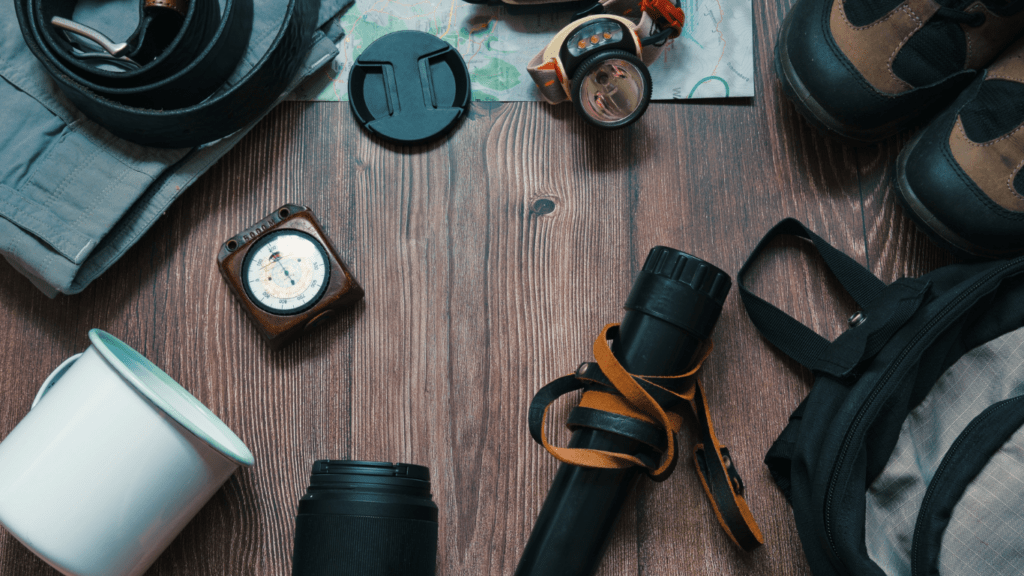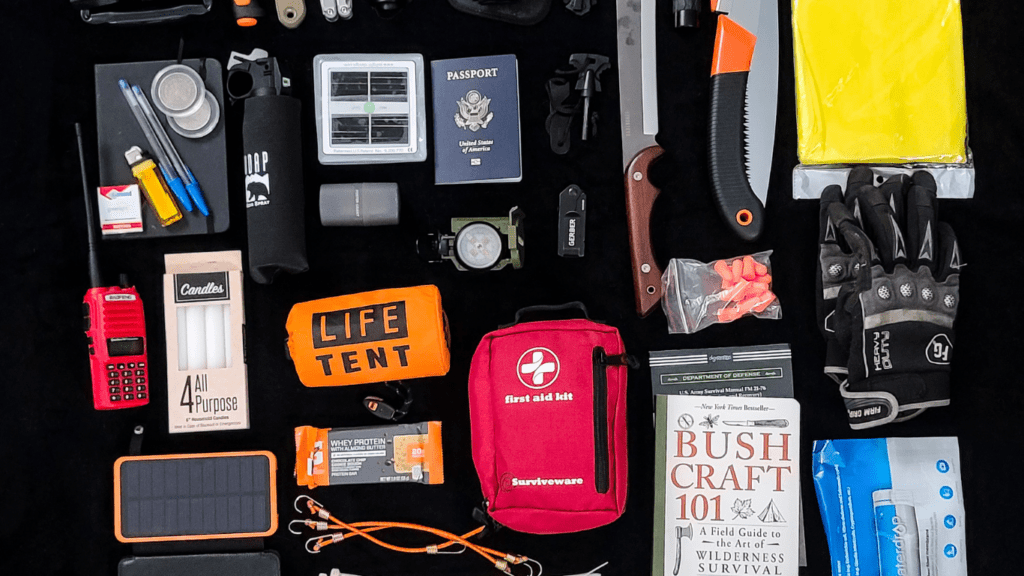Heading out into the great outdoors for a camping adventure is always exciting, but the thought of packing and organizing all your gear can be overwhelming. As a seasoned camper, I’ve learned a few tricks along the way to streamline this process and ensure a stress-free experience from start to finish. In this article, I’ll share some of the best practices for packing and organizing your camping gear, so you can spend less time searching for items and more time enjoying the beauty of nature.
Efficiently packing your gear not only saves space but also helps you stay organized throughout your trip. From choosing the right containers to utilizing strategic packing techniques, I’ll walk you through step-by-step on how to pack smart for your next outdoor excursion. With these tips, you’ll be able to maximize your time in the wilderness and minimize any packing-related headaches.
Essential Gear for Every Camping Trip
When it comes to camping, having the right gear can make or break your outdoor experience. In my years of camping, I’ve learned that there are a few essential items that should always be on your packing list. Here are the must-have gear for every camping trip:
- Tent: A reliable tent is your home away from home in the wilderness. Look for one that’s easy to set up, spacious enough for your needs, and weather-resistant to keep you dry during unexpected rain.
- Sleeping Bag: A good sleeping bag is essential for a comfortable night’s sleep under the stars. Choose one that suits the climate you’ll be camping in and provides enough warmth for chilly nights.
- Camp Stove: Cooking delicious meals at the campsite is easier with a portable camp stove. Opt for a lightweight and compact stove that’s easy to use and provides a stable cooking surface.
- Lantern or Headlamp: Lighting is crucial when camping, especially at night. Pack a lantern or headlamp to illuminate your campsite and navigate through the darkness safely.
- First Aid Kit: Accidents can happen, so always have a well-stocked first aid kit on hand. Include essentials like bandages, antiseptic wipes, pain relievers, and any personal medications you may need.
- Water Filtration System: Staying hydrated is key to enjoying your camping trip. Invest in a reliable water filtration system to ensure you have access to clean drinking water wherever you are.
- Multi-Tool: A multi-tool is a handy gadget that can serve multiple purposes, from fixing gear to prepping meals. Choose one with essential tools like a knife, scissors, screwdriver, and bottle opener.
Efficient Ways to Pack Your Camping Gear
Packing efficiently is crucial when preparing for a camping trip to ensure that you have everything you need while minimizing space and weight. Below are some tips on how to pack different essentials for a hassle-free camping experience.
Packing Strategy for Clothes and Personal Items
When it comes to packing clothes and personal items for camping, I always follow a simple yet effective strategy. Roll clothes instead of folding them to save space in your backpack or luggage. Use resealable bags to store smaller items like socks and underwear, keeping them organized and easily accessible. efficient packing of clothes can also involve wearing your bulkiest clothing items during travel to free up more space.
Packing Strategy for Cooking and Food Supplies
For organizing cooking and food supplies, I recommend packing items in stackable containers or using a compact camping cookware set. Keep spices and condiments in small containers to avoid bulky packaging. efficiently packing food involves meal planning to bring just the right amount of ingredients, reducing excess weight. Additionally, pack non-perishable snacks like nuts or granola bars in resealable bags for quick energy on the go.
Organizational Tips for a Neat Campsite Setup
Ensuring a tidy campsite setup can streamline your camping experience. Here are essential organizational tips to help you maintain a neat and efficient outdoor living space:
- Designate Zones Within Your Campsite
Organizing your campsite into specific zones can bring order to the chaos. Create distinct areas for cooking, sleeping, recreation, and storage. Placing items in designated zones makes it easier to locate them when needed and prevents clutter. - Utilize Hanging Storage Solutions
Maximize vertical space by utilizing hanging storage solutions. Hang essentials like lanterns, cooking utensils, and toiletry bags on hooks or lines near your campsite. This not only keeps items off the ground but also ensures easy access while saving space. - Opt for Multi-purpose Gear
Selecting multi-purpose gear can help reduce the number of items you need to pack. Invest in versatile tools like camping chairs that double as storage containers, or a camping knife with multiple functions. Choosing multi-purpose gear minimizes clutter and maximizes efficiency. - Label Your Storage Containers
Labeling storage containers is a simple yet effective way to maintain organization. Use waterproof labels or markers to clearly identify the contents of each container. This practice simplifies the process of finding specific items and ensures that everything has its designated place. - Implement a Daily Cleaning Routine
A quick daily cleaning routine can prevent your campsite from descending into chaos. Allocate a few minutes each day to tidy up the space, put items back in their designated spots, and dispose of any trash. Maintaining a clean campsite enhances the overall camping experience and reduces stress.
By following these organizational tips, you can create a well-structured and orderly campsite setup that enhances your outdoor adventures. Prioritizing organization not only saves time but also contributes to a more enjoyable and efficient camping trip.
Maximizing Space in Your Backpack
Ensuring optimal space utilization in your backpack is crucial for a seamless camping experience. It’s essential to pack efficiently to accommodate all your gear while keeping the weight manageable. Here are some practical tips to help you make the most of the available space:
- Prioritize Essential Items: Start by listing all the essential items you’ll need for your camping trip, such as a tent, sleeping bag, cooking supplies, and clothing. Consider the duration of your stay and the activities you plan to engage in to pack accordingly.
- Pack Smartly: When packing your backpack, place heavier items closer to your back and lighter items towards the outside. This distribution helps maintain balance and stability while hiking or moving around the campsite. Utilize compression sacks or packing cubes to organize clothes and maximize space.
- Choose Versatile Gear: Opt for multi-purpose gear whenever possible to reduce the number of items you need to carry. For example, select a camping stove that can also function as a grill or a cooking pot that doubles as a mug. This approach not only saves space but also minimizes the weight of your backpack.
- Roll Clothes Instead of Folding: Rolling clothes instead of folding them saves space and minimizes wrinkles. This method also allows you to fit more items into your backpack without creating bulky layers. Consider using a waterproof stuff sack to keep your clothes compact and protected from moisture.
- Utilize External Attachments: Take advantage of the external attachment points on your backpack to secure items like sleeping pads, trekking poles, or water bottles. This not only frees up space inside your pack but also allows easy access to frequently used gear without having to delve into the main compartment.
By following these space-saving tips, you can efficiently pack your backpack for your next camping adventure, ensuring you have everything you need while keeping your load manageable.



 Karencita Oboyler brings her creative flair and deep appreciation for the natural world to her role at Terra Tactician Tactics. With a background in digital marketing and content strategy, Karencita is dedicated to crafting engaging and visually appealing articles that captivate the platform's diverse audience. Her work focuses on highlighting unique outdoor destinations, offering practical travel advice, and showcasing the beauty of nature through stunning photography and storytelling. Karencita's ability to blend creativity with valuable information has helped Terra Tactician Tactics stand out as a dynamic and compelling resource for outdoor enthusiasts.
Beyond her content contributions, Karencita is passionate about building a vibrant community around the platform. She is committed to fostering an inclusive space where everyone, from seasoned adventurers to curious beginners, feels welcomed and inspired to explore the great outdoors. Her innovative ideas and strategic approach to content development have been instrumental in expanding Terra Tactician Tactics' reach and impact. Karencita's enthusiasm for the project is matched only by her love for nature, making her an integral part of the team and its continued success.
Karencita Oboyler brings her creative flair and deep appreciation for the natural world to her role at Terra Tactician Tactics. With a background in digital marketing and content strategy, Karencita is dedicated to crafting engaging and visually appealing articles that captivate the platform's diverse audience. Her work focuses on highlighting unique outdoor destinations, offering practical travel advice, and showcasing the beauty of nature through stunning photography and storytelling. Karencita's ability to blend creativity with valuable information has helped Terra Tactician Tactics stand out as a dynamic and compelling resource for outdoor enthusiasts.
Beyond her content contributions, Karencita is passionate about building a vibrant community around the platform. She is committed to fostering an inclusive space where everyone, from seasoned adventurers to curious beginners, feels welcomed and inspired to explore the great outdoors. Her innovative ideas and strategic approach to content development have been instrumental in expanding Terra Tactician Tactics' reach and impact. Karencita's enthusiasm for the project is matched only by her love for nature, making her an integral part of the team and its continued success.